Liver-Inspired Polyetherketoneketone Scaffolds Simulate Regenerative Signals and Mobilize Anti-Inflammatory Reserves to Reprogram Macrophage Metabolism for Boosted Osteoporotic Osseointegration
- PMID: 37400369
- PMCID: PMC10477864
- DOI: 10.1002/advs.202302136
Liver-Inspired Polyetherketoneketone Scaffolds Simulate Regenerative Signals and Mobilize Anti-Inflammatory Reserves to Reprogram Macrophage Metabolism for Boosted Osteoporotic Osseointegration
Abstract
Tissue regeneration is regulated by morphological clues of implants in bone defect repair. Engineered morphology can boost regenerative biocascades that conquer challenges such as material bioinertness and pathological microenvironments. Herein, a correlation between the liver extracellular skeleton morphology and the regenerative signaling, namely hepatocyte growth factor receptor (MET), is found to explain the mystery of rapid liver regeneration. Inspired by this unique structure, a biomimetic morphology is prepared on polyetherketoneketone (PEKK) via femtosecond laser etching and sulfonation. The morphology reproduces MET signaling in macrophages, causing positive immunoregulation and optimized osteogenesis. Moreover, the morphological clue activates an anti-inflammatory reserve (arginase-2) to translocate retrogradely from mitochondria to the cytoplasm due to the difference in spatial binding of heat shock protein 70. This translocation enhances oxidative respiration and complex II activity, reprogramming the metabolism of energy and arginine. The importance of MET signaling and arginase-2 in the anti-inflammatory repair of biomimetic scaffolds is also verified via chemical inhibition and gene knockout. Altogether, this study not only provides a novel biomimetic scaffold for osteoporotic bone defect repair that can simulate regenerative signals, but also reveals the significance and feasibility of strategies to mobilize anti-inflammatory reserves in bone regeneration.
Keywords: arginase-2; biomimetic surface modification; macrophage metabolic reprogramming; osseointegration; polyetherketoneketone.
© 2023 The Authors. Advanced Science published by Wiley-VCH GmbH.
Conflict of interest statement
The authors declare no conflict of interest.
Figures

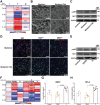
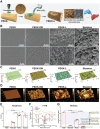
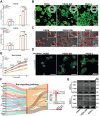
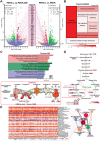

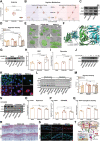

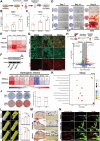
Similar articles
-
Nanozyme Coating-Mediated Mitochondrial Metabolic Reprogramming of Macrophages for Immunomodulatory Osseointegration in Rheumatoid Arthritis Case.ACS Nano. 2025 Jul 22;19(28):26127-26146. doi: 10.1021/acsnano.5c07535. Epub 2025 Jul 8. ACS Nano. 2025. PMID: 40628648
-
Comparison of Stromal Vascular Fraction and Passaged Adipose-Derived Stromal/Stem Cells as Point-of-Care Agents for Bone Regeneration.Tissue Eng Part A. 2019 Nov;25(21-22):1459-1469. doi: 10.1089/ten.TEA.2018.0341. Epub 2019 Jun 14. Tissue Eng Part A. 2019. PMID: 30734661
-
Synergistic enhancement of angiogenesis and osseointegration in 3D-printed porous polyetheretherketone scaffolds using biomimetic coatings of bone morphogenetic protein-2/fibronectin.Int J Biol Macromol. 2025 Mar;297:139876. doi: 10.1016/j.ijbiomac.2025.139876. Epub 2025 Jan 13. Int J Biol Macromol. 2025. PMID: 39814279
-
Management of urinary stones by experts in stone disease (ESD 2025).Arch Ital Urol Androl. 2025 Jun 30;97(2):14085. doi: 10.4081/aiua.2025.14085. Epub 2025 Jun 30. Arch Ital Urol Androl. 2025. PMID: 40583613 Review.
-
Biomaterial multiscale geometry for regenerative immunoengineering of bone tissue.Acta Biomater. 2025 Jul 16:S1742-7061(25)00533-1. doi: 10.1016/j.actbio.2025.07.036. Online ahead of print. Acta Biomater. 2025. PMID: 40680918 Review.
Cited by
-
TRIM65 regulates glucose metabolic reprogramming to promote glioma cell proliferation via ubiquitination and degradation of AMPK.NPJ Precis Oncol. 2025 Jun 5;9(1):163. doi: 10.1038/s41698-025-00964-z. NPJ Precis Oncol. 2025. PMID: 40473847 Free PMC article.
-
Chirality-Induced Hydroxyapatite Manipulates Enantioselective Bone-Implant Interactions Toward Ameliorative Osteoporotic Osseointegration.Adv Sci (Weinh). 2025 Feb;12(8):e2411602. doi: 10.1002/advs.202411602. Epub 2024 Dec 31. Adv Sci (Weinh). 2025. PMID: 39738981 Free PMC article.
-
An axolotl limb regeneration-inspired strategy to enhance alveolar bone regeneration.Bioact Mater. 2025 Feb 19;48:242-256. doi: 10.1016/j.bioactmat.2025.02.020. eCollection 2025 Jun. Bioact Mater. 2025. PMID: 40046012 Free PMC article.
-
SIRT3 regulates cardiolipin biosynthesis in pressure overload-induced cardiac remodeling by PPARγ-mediated mechanism.PLoS One. 2024 Apr 16;19(4):e0301990. doi: 10.1371/journal.pone.0301990. eCollection 2024. PLoS One. 2024. PMID: 38625851 Free PMC article.
-
Regulating macrophage glucose metabolism homeostasis via mitochondrial rheostats by short fiber-microsphere scaffolds for bone repair.Bioact Mater. 2025 Mar 15;49:399-417. doi: 10.1016/j.bioactmat.2025.03.008. eCollection 2025 Jul. Bioact Mater. 2025. PMID: 40144792 Free PMC article.
References
-
- Duda G. N., Geissler S., Checa S., Tsitsilonis S., Petersen A., Schmidt‐Bleek K., Nat. Rev. Rheumatol. 2023, 19, 78. - PubMed
-
- Zhang J., Tong D., Song H., Ruan R., Sun Y., Lin Y., Wang J., Hou L., Dai J., Ding J., Yang H., Adv. Mater. 2022, 34, 2202044. - PubMed
-
- Yuan B., Cheng Q., Zhao R., Zhu X., Yang X., Yang X., Zhang K., Song Y., Zhang X., Biomaterials 2018, 170, 116. - PubMed
-
- Torstrick F. B., Lin A. S. P., Potter D., Safranski D. L., Sulchek T. A., Gall K., Guldberg R. E., Biomaterials 2018, 185, 106. - PubMed
-
- a) Li B., Shu R., Dai W., Yang F., Xu H., Shi X., Li Y., Bai D., Yang W., Deng Y., Small 2022, 18, 2203619; - PubMed
- b) Liu W., Li J., Cheng M., Wang Q., Yeung K. W. K., Chu P. K., Zhang X., Adv. Sci. 2018, 5, 1800749; - PMC - PubMed
- c) Yuan B., Zhang Y., Zhao R., Lin H., Yang X., Zhu X., Zhang K., Mikos A. G., Zhang X., Sci. Adv. 2022, 8, eabq7116. - PMC - PubMed
Publication types
MeSH terms
Substances
Grants and funding
- 81921002/National Natural Science Foundation of China
- 82130027/National Natural Science Foundation of China
- 81991505/National Natural Science Foundation of China
- 81900970/National Natural Science Foundation of China
- SHSMU-ZLCX20212400/Innovative Research Team of High-level Local Universities in Shanghai
LinkOut - more resources
Full Text Sources
Medical
Research Materials
Miscellaneous
